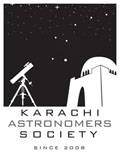On June 30, 1973, the Concorde prototype (dubbed Concorde 001) made a journey over northern Africa which set records yet to be broken. On that day, it raced the Moon’s umbral shadow during the second longest total solar eclipse of the last century. Each of the flight’s participants accumulated an amazing 74 minutes of shadow time.
Don Connolly made this painting of Concorde 001 emerging from umbral darkness. It depicts the eclipse as if photographed by a 35mm camera with a 1000mm lens from about 3000m below the aircraft. The painting — Racing the Moon — won first prize in the commercial category of the Aviation Week & Space Technology/American Society of Aviation Artists 2005 Aerospace Art Awards. Concept by Bob Morris, research and composition by Don Connolly and Bob Morris, coronal shape from Wendy Carlos’ image of the 1973 eclipse, corona orientation and “bead” location calculated by Fred Espenak, NASA.
Extract from the May 2009 issue of S&T:
It was a half-hour flight, with each second precisely allocated, from Las Palmas to the critical rendezvous point where the 250-km-diameter umbral shadow, speeding at 2,500 km per hour, would overtake Concorde — then cruising at 2,145 km per hour. If Concorde arrived a mere 6 minutes early, the leading edge of the umbra would need 42 minutes to catch up, leaving only 32 minutes of totality before the aircraft had to change course for landing. If, on the other hand, Concorde was 6 minutes late, the umbra would have just passed, and the observers would totally miss the eclipse. Pilot André Turcat decided to lift off the Las Palmas runway 20 seconds early on eclipse day to allow for possible atmospheric irregularities. If necessary, a delay could be accomplished via small airbrakes. The eclipse-day supersonic safari team — guided by Turcat and four crew members — comprised seven astronomers, two assistants, and a photographer. At 10:53.5 GMT Concorde arrived at west longitude 9°, north latitude 20.6°, at an altitude of 16,057 meters (52,680 feet) over Mauritania. Flying at Mach 2.03, it met the Moon’s umbra within one second of the planned time and the eclipse began to unfold in slow motion.
